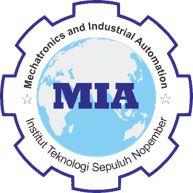Environmental Effects of Sulphate on Conventional Concrete Based on Portland Composite Cement
Abstract
Keywords
Full Text:
PDFReferences
AASHTO Designation, & ASTM Designation. (n.d.). “Specific Gravity and Absorption of Fine Aggregates”.
Arizki, R., Sari, I., Wallah, S. E., & Windah, R. S. (2015). “Pengaruh Jumlah Semen Dan Fas Terhadap Kuat Tekan Beton Dengan Agregat Yang Berasal Dari Sungai”. Jurnal Sipil Statik, 3(1), 68–76.
ASTM C33-99. (1999). Standard Specification for Concrete Aggregates.
ASTM C39/C 39M-03. (n.d.). Standard Test Method for Compressive Strength of Cylindrical Concrete Specimens.
ASTM C136-06. (2006). Standard Test Method for Sieve Analysis of Fine and Coarse Aggregates. www.astm.org,
ASTM C267-01. (n.d.). Standard Test Methods for Chemical Resistance of Mortars, Grouts, and Monolithic Surfacings and Polymer Concretes.
ASTM C494/C 494M-99. (2001). Standard Specification for Chemical Admixtures for Concrete 1.
ATSM 136. (n.d.). Standard Test Method for Sieve Analysis of Fine and Coarse Aggregates. www.astm.org,
Beton, A., & Tinggi, K. (n.d.). Semen Portland di Indonesia. www.pusjatan.pu.go.id
Brown, P. W., & Badger, S. (n.d.). The distributions of bound sulfates and chlorides in concrete subjected to mixed NaCl, MgSO 4 , Na 2 SO 4 attack.
Catur Budi, K., Iwan Candra, A., Aprillia Karisma, D., Muslimin, S., Kunci, K., Mutu Tinggi, B., Tekan, K., & Beton, P. (2020). “Pengaruh Metode Perawatan Beton Dengan Suhu Normal Terhadap Kuat Tekan Beton Mutu Tinggi” (Vol. 5, Issue 2).
Cement Concrete and Aggregates Australia. (2002).
Gjørv, O. E. (2008). “High-strength concrete”. In Developments in the Formulation and Reinforcement of Concrete (pp. 79–97). Elsevier Ltd. https://doi.org/10.1533/9781845694685.79
G.P, F. E., & Tanzil Gunawam. (n.d.). “Pengaruh Sulfat Terhadap Kuat Tekan Beton Dengan Variasi Bubuk Kaca Subtitusi Sebagian Pasir”.
Hoang, N.-D., & Pham, A.-D. (2016). “Estimating Concrete Workability Based on Slump Test with Least Squares Support Vector Regression”. Journal of Construction Engineering, 2016, 1–8. https://doi.org/10.1155/2016/5089683
Ivanov pratama. (2020). “Tugas Akhir Pengaruh Waktu Perawatan Terhadap Kuat Desak Beton Mutu Tinggi”.
Karakoç, M. B., Türkmen, I., Maraş, M. M., Kantarci, F., & Demirboʇa, R. (2016). “Sulfate resistance of ferrochrome slag based geopolymer concrete”. Ceramics International, 42(1), 1254–1260. https://doi.org/10.1016/j.ceramint.2015.09.058
Kirilov, K., & Ivanov, I. (2012). “A programme for determination of codons and codons context frequency of occurrence in sequenced genomes”. Biotechnology and Biotechnological Equipment, 26(5), 3310–3314. https://doi.org/10.5504/bbeq.2012.0074
Lee, K. M., Bae, S. H., Park, J. I., & Kwon, S. O. (2015). “Mass change prediction model of concrete subjected to sulfate attack”. Mathematical Problems in Engineering, 2015. https://doi.org/10.1155/2015/298918
Maes, M., & de Belie, N. (2014). “Resistance of concrete and mortar against combined attack of chloride and sodium sulphate”. Cement and Concrete Composites, 53, 59–72. https://doi.org/10.1016/j.cemconcomp.2014.06.013
Maes, M., & de Belie, N. (2017). “Influence of chlorides on magnesium sulphate attack for mortars with Portland cement and slag based binders”. Construction and Building Materials, 155, 630–642. https://doi.org/10.1016/j.conbuildmat.2017.07.201
Müllauer, W., Beddoe, R. E., & Heinz, D. (2013). “Sulfate attack expansion mechanisms. Cement and Concrete Research”, 52, 208–215. https://doi.org/10.1016/j.cemconres.2013.07.005
Omar, S., Rasheeduzzafar, B., Saeed Baghabra AI-Amoudi, mar, Abduljauwad, S. N., & Maslehuddin, M. (n.d.). Magnesium-Sodium Sulfate Attack in Plain and Blended Cements Related papers BLENDED CEMENTS.
Ress, J., Martin, U., & Bastidas, D. M. (2021). “Improved Corrosion Protection of Acrylic Waterborne Coating by Doping with Microencapsulated Corrosion Inhibitors”. 11, 1134. https://doi.org/10.3390/coatings
Sika Data Sheet. (n.d.). “concrete admixture for high flow / self-compacting concrete”.
SNI 03-1974-1990. (n.d.). Metode pengujian kuat tekan beton.
SNI 15-2049-2004. (2004). Semen portland.
SNI 15-7064-2004. (2004). Semen Portland Komposiy.
SNI 1969:2008. (2008). Cara uji berat jenis dan penyerapan air agregat kasar.
SNI 1972:2008. (2008). Cara uji slump beton. Standard Nasional Indonesia Cara Uji Slump Beton.
SNI 1974:2011. (2011). Cara uji kuat tekan beton dengan benda uji silinder Badan Standardisasi Nasional. www.bsn.go.id
SNI 6989.11:2019. (n.d.). Cara uji derajat keasaman (pH) dengan menggunakan pH meter.
SNI-03-6468-2000. (n.d.).
Sofyan, M. (2021). Kekuatan Awal, “Workability dan Berat Volume Beton berbahan Agregat Plastik Polypropylene”. KILAT, 10(2), 301–308. https://doi.org/10.33322/kilat.v10i2.1484
Standard Test Methods for pH of water. (2005). ASTM D 1293-99.
Tata cara perencanaan campuran tinggi dengan semen portland dengan abuterbang. (2000). SNI 03-6468-2000.
Tian, B., & Cohen, M. D. (2000). “Does gypsum formation during sulfate attack on concrete lead to expansion". In Cement and Concrete Research (Vol. 30).
Tragardh, J. (2007). Sulphate attack. https://www.researchgate.net/publication/270902185
Uysal, M., & Sumer, M. (2011). “Performance of self-compacting concrete containing different mineral admixtures”. Construction and Building Materials, 25(11), 4112–4120. https://doi.org/10.1016/j.conbuildmat.2011.04.032
Vedalakshmi, R., Saraswathy, V., & Yong, A. K. (2011). “Performance evaluation of blended cement concretes under MgSO4 attack”. Magazine of Concrete Research, 63(9), 669–681. https://doi.org/10.1680/macr.2011.63.9.669
Wang, J., Niu, D., Wang, Y., & Wang, B. (2018). “Durability performance of brine-exposed shotcrete in salt lake environment”. Construction and Building Materials, 188, 520–536. https://doi.org/10.1016/j.conbuildmat.2018.08.139
Yang, N., Shi, C., Yang, J., & Chang, Y. (2014). “Research Progresses in Magnesium Phosphate Cement–Based Materials”. Journal of Materials in Civil Engineering, 26(10). https://doi.org/10.1061/(asce)mt.1943-5533.0000971
DOI: http://dx.doi.org/10.12962%2Fj23378557.v9i1.a16230
Refbacks
- There are currently no refbacks.
This work is licensed under a Creative Commons Attribution 4.0 International License. IPTEK The Journal of Engineering published by Pusat Publikasi Ilmiah, Institut Teknologi Sepuluh Nopember.
Please contact us for order or further information at: email: iptek.joe[at]gmail.com Fax/Telp: 031 5992945. Editorial Office Address: Pusat Riset Building 6th floor, ITS Campus, Sukolilo, Surabaya 60111, Indonesia.








